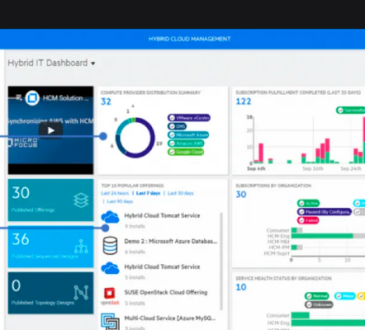
In today’s digital age, the demand for storage solutions has grown exponentially. From personal photos and videos to business documents and applications, the need for reliable and scalable storage options is more important than ever. Cloud storage has emerged as a prominent solution, offering flexibility, accessibility, and cost-effectiveness. However, understanding how much is cloud storage which can be a complex endeavor due to the various pricing models and factors involved. In this article, we will delve into the world of cloud storage pricing, exploring different models and considerations.
Contents
Understanding Cloud Storage Pricing Models

Cloud storage providers offer a range of pricing models to cater to the diverse needs of users. The most common pricing models include:
Pay-as-You-Go: This model charges users based on their actual usage. It is suitable for users with fluctuating storage needs as they only pay for what they use. The cost is calculated based on factors such as the amount of data stored, data transfer, and requests made to the storage service.
Tiered Pricing: In this model, storage is divided into tiers, with each tier offering a specific amount of storage at a fixed price. Users can choose the tier that aligns with their storage requirements. This model is beneficial for those who need a predictable monthly cost and are willing to estimate their storage needs.
Flat-Rate Pricing: Flat-rate pricing involves paying a fixed monthly or yearly fee for a certain amount of storage. This model is suitable for users who want a predictable cost regardless of fluctuations in usage. However, exceeding the allocated storage might incur additional charges.
Free Tier: Many cloud storage providers offer a limited amount of storage for free as an introductory offer. This can be an excellent option for personal users or small businesses with minimal storage needs.
Factors Affecting Cloud Storage Costs
Understanding the factors that contribute to cloud storage costs is essential for making informed decisions. The following factors can influence the final pricing:
Storage Volume: The amount of data you need to store is a significant determinant of cost. Providers often charge based on the volume of data in gigabytes (GB) or terabytes (TB).
Data Transfer and Bandwidth: Uploading and downloading data from the cloud incurs data transfer charges. Be aware of your data transfer requirements, especially if you have frequent and significant data movement.
Access Frequency: The frequency of data access can impact costs. If you need to access your data frequently, you might face higher charges compared to infrequent access.
Data Redundancy and Replication: Many cloud providers offer redundancy and replication features for data protection. While these are essential for data durability, they can also increase costs due to the duplication of data across multiple locations.
Geographical Location: Some providers offer different pricing based on the geographic region where data is stored. Storing data in certain regions might be more expensive than others due to factors like infrastructure costs and local regulations.
Service Level Agreements (SLAs): Higher service levels, such as guaranteed uptime and faster response times, might come at an additional cost.
Additional Features: Some providers offer advanced features like encryption, data analytics, and content delivery networks (CDNs). These features can enhance functionality but may also contribute to higher costs.
Comparing Cloud Storage Providers

Various cloud storage providers are available in the market, each offering distinct pricing structures and features. It’s crucial to compare providers to find the one that best aligns with your needs and budget. Some popular cloud storage providers include:
Amazon Web Services (AWS): AWS offers Amazon S3 (Simple Storage Service), which provides scalable and secure object storage. It follows a pay-as-you-go model and offers different storage classes based on access frequency.
Microsoft Azure: Azure’s Blob Storage provides scalable cloud object storage. Azure offers tiered pricing based on storage tiers, access tiers, and redundancy options.
Google Cloud Storage: Google Cloud offers various storage classes, including Standard, Nearline, and Coldline, each tailored to different use cases. Pricing is tiered based on these classes.
Dropbox: Dropbox offers cloud storage for both personal and business use. It follows a flat-rate pricing model, charging a fixed fee for allocated storage.
Apple iCloud: iCloud offers cloud storage primarily for Apple device users. It provides tiered pricing options based on storage capacity.
Optimizing Cloud Storage Costs

To effectively manage cloud storage costs, consider the following strategies:
Regularly Review Usage: Periodically assess your storage needs and adjust your plan accordingly. Remove unnecessary data to avoid overpaying for storage you don’t need.
Utilize Data Lifecycle Management: Implement data lifecycle policies to automatically move data to appropriate storage tiers based on access patterns. This can help optimize costs by using lower-cost storage options for less frequently accessed data.
Explore Cost Estimators: Many cloud providers offer cost calculators or estimators that can help you understand potential costs based on your usage patterns.
Leverage Reserved Capacity: Some providers offer reserved capacity plans that provide cost savings for committing to a specific amount of storage over a defined period.
Monitor and Alerting: Set up monitoring and alerts for unusual spikes in usage to prevent unexpected cost surges.
Conclusion
Cloud storage offers unparalleled flexibility, accessibility, and scalability, but its costs can vary significantly based on your usage patterns and the provider you choose. Understanding the different pricing models, factors influencing costs, and strategies for optimization is essential for making informed decisions that align with your budget and storage requirements. As technology evolves and competition among cloud storage providers continues, staying informed about pricing changes and new offerings is vital to ensure you get the best value for your investment in cloud storage.



